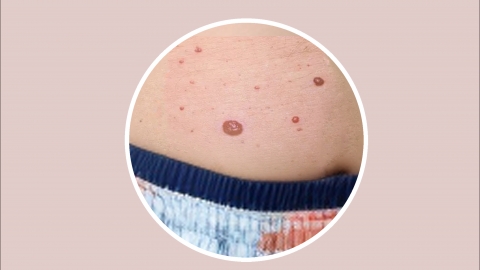How is cryotherapy for hemangioma performed?
Cryotherapy for hemangiomas is a method that uses low-temperature technology to cause necrosis and shedding of hemangioma tissue, thereby achieving therapeutic goals. Below are details on its mechanism, preoperative preparation, procedure, postoperative reactions, recovery period, and more. A specific analysis is as follows:

1. Mechanism: Cryotherapy utilizes the low temperatures generated by refrigerants applied directly to hemangioma tissue, causing local cellular dehydration, protein denaturation, and circulatory stasis. This ultimately leads to necrosis and shedding of the affected tissue, effectively removing or reducing the size of the hemangioma, while minimizing damage to surrounding healthy tissues.
2. Preoperative Preparation: Clean the hemangioma and surrounding skin before treatment. The physician evaluates the size, location, and depth of the hemangioma and confirms the absence of contraindications such as skin infection or coagulation disorders. Local anesthesia or sedation may be used for sensitive areas or young patients to reduce discomfort.
3. Procedure: The physician positions a cryogenic probe over the lesion. As the refrigerant evaporates, it rapidly removes heat, cooling the targeted skin area. Freezing duration (ranging from several seconds to minutes) is adjusted according to the lesion characteristics. Once the desired effect is achieved, the probe is removed, completing a single treatment session.
4. Postoperative Reactions: After treatment, the treated area may initially appear pale and swollen, then progress to redness, swelling, and blister formation. Some individuals may experience mild pain or itching—these are normal responses. Blisters typically resolve spontaneously within 1–2 weeks, forming a scab; care should be taken to prevent rupture and subsequent infection.
5. Recovery Period: Scabs usually fall off naturally after 2–3 weeks. The healing area may appear pink or show pigmentation changes, which generally fade over several months. Larger or deeper hemangiomas often require multiple treatments, with intervals of 1–2 months between sessions.
After cryotherapy, it is essential to strictly follow medical instructions for wound care: keep the wound clean and dry, and avoid scratching or friction. If abnormal symptoms such as wound exudate, pus, or severe pain occur, seek medical attention promptly. Regular follow-up visits are recommended to allow the physician to assess healing progress and determine whether additional treatments are needed.







